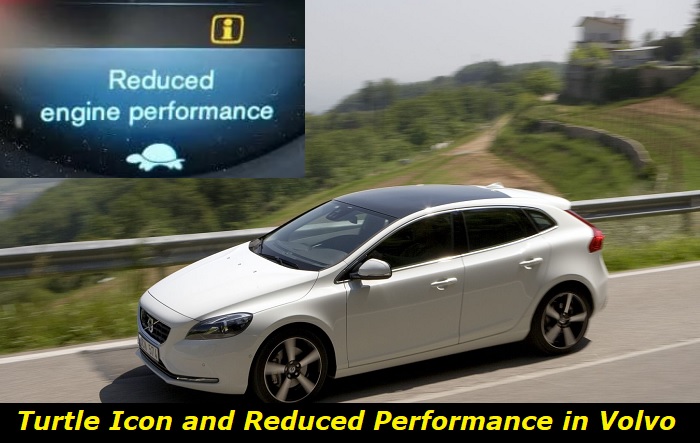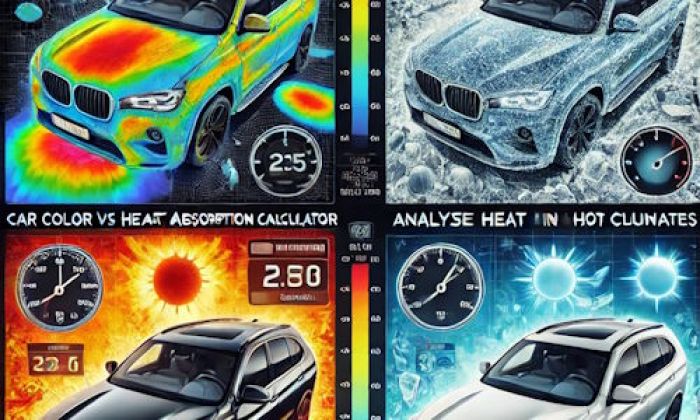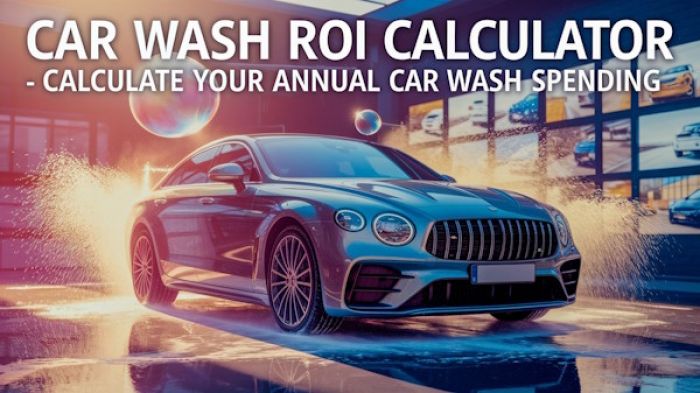It's not uncommon for a Volvo car to show the "Reduced Engine Performance" message and an icon of a turtle. Although the turtle is quite adorable, when this happens the twentieth time on one day, you are going to hate that pictogram with all your heart and soul. Unfortunately, there are no proper solutions that would work for any Volvo car, so you will have to read a pretty long article.
Reduced engine performance message highlights
- Common reasons:engine management problem, actual engine damage, transmission damage
- How to fix:read the codes, disconnect the battery for some time
- Possible consequences:engine damage, transmission damage
- Priority level:High
- Can you drive?Carefully
- DIY repair:Impossible
- Repair price range:$150-$800
Also, check out the reasons and fixes for another common Volvo problem in another article - Start-Stop Service Required.

Your actions when you see "Reduced Engine Performance"
The first question that is important to answer is if you can drive when you see this. Yes, it's safe to continue driving but it's not safe to ignore this issue. You can drive several miles till you reach the dealership or maybe your garage. But driving a week after this message popped up is not a good idea.
Here's what you should understand to make sure that it's safe to drive:
- if your vehicle suddenly changes its behavior, you should be careful and maybe stop the car;
- if you see any other warning lights, you should make sure that the safety systems aren't affected;
- in hybrids, you may get this message when the hybrid system is malfunctioning and you only can drive using the gas engine, this is OK;
- also, I strongly recommend slowing down and taking the right side of the road to avoid unexpected problems on the road.
When your Volvo says that the engine performance is reduced, it means that something is wrong with the ECU. It may have registered some anomaly but there is no clear evidence of what exactly the problem is triggering this issue. So, it's impossible to say for sure which sensor or unit causes this problem. At least for now.
So, even if your car didn't actually lose any power after you saw this message, it doesn't mean you should continue driving as before. Drive carefully and understand that anything can happen.
The most common reasons for this issue
The adorable turtle and the "Reduced Engine Performance" message may pop up on the dash of your Volvo because of many different problems. It may be some glitch in the ECU but, in most cases, there are some more understandable issues that trigger the message.
Here are the most common ones:
1) Ignition or injection problems
This message may appear on your dash when the engine is heavily misfiring. This may be caused by several different issues like spark plug problems, ignition coil failures, poor fuel pressure, fuel pump issues, or internal engine damage. Proper inspection is needed and just getting the code from the ECU won't help.
Fortunately, this shouldn't happen with low-mileage Volvo engines, so if your vehicle is pretty fresh, keep reading about other issues.
2) Software problems
There were several recalls in different countries that had this message in mind. But Volvo dealers in the US seem to not know about these recalls. Anyway, one of the common ways to solve the problem is to ask the dealer to install the latest software updates. This seems to help much in the case of 2019-2020 vehicles, especially the Volvo XC60.
3) Low battery or bad alternator
The power supply is super important for any of the modern vehicles. In your Volvo, there may be just one 12V battery, there may also be an additional auxiliary battery or maybe a hybrid battery if you are driving the MHEV or PHEV version of the car.
Problems with any battery can be the reason for this error message. Low batteries will take all the power from the alternator for constant charging and some functions may start failing. Also, bad batteries won't power the units that they need to power for proper work.
Sometimes, just jumping or charging the 12V battery will do the trick. Checking it with the multimeter doesn't make sense. Modern AGM batteries always show 12.4-12.5 volts till they eventually drop.
4) One of the engine sensors
Another possible issue you may want to check is the failure of one of the sensors or actuators that is connected to the engine. This may be the throttle position sensor or maybe the oxygen sensor. The choice is vast as modern engines have dozens of different electronic units. Fortunately, you can easily understand what's going on just by plugging in the good OBD2 scanner.
5) Throttle body
Several cases were reported on forums that ended up being failures due to throttle body issues. It's highly likely that this problem will happen on high-mileage Volvo cars. But some engines had initially faulty throttle bodies and a lot of European owners report replacing them under warranty. So, this unit is obviously worth taking a look at.
Also, you should check the system that transmits the signals from the gas pedal to the throttle. There is a sensor and also some wiring that can go bad after some impact.
6) ECU failure
Unfortunately, this is also possible. I've heard of several cases when this turtle error message popped up after the ECU heavily glitched. This is not a software failure, but the physical damage of the electronic control unit.
There is no data to analyze, so I just suppose you should check the ECU health if you can't locate the problem that throws this message.
What models are affected?
You can see the turtle and the "Reduced Engine Performance" message in almost any modern Volvo vehicle starting from about the 2017 model year. In the US, the majority of cases are registered in the XC60 model but in European forums, I found evidence that the problem may also affect other models like the V90, the XC40, and the XC90. Surprisingly, the hybrid models are more commonly affected by this issue.
Is there anything you can do on your own?
Modern vehicles are quite complicated in terms of the technologies used in them. And DIY repairs are almost always a bad idea. But in case of such error messages, there are still several things you may try doing with your Volvo to solve the problem at least for some time.
Here's what you may want to try:
1. Use an OBD2 scanner to find the issue. These scanners are pretty affordable now, so you can get one or even go to the parts store and ask them to run the diagnostics. When you know the code, things may be much easier to solve.
2. Disconnect the battery. Locate the 12V battery in your Volvo and disconnect the negative terminal. Then press the horn to release all the stored power and wait for 4-5 minutes. Connect the battery and see if the problem disappears.
When you disconnect the battery in your vehicle, the ECU stops getting power and "falls asleep". Once you connect the battery back, the ECU resets and starts working with its factory settings. In many cases, you will at least clear the message for some time. But sometimes, the problem may be gone because this was a glitch in the software which is now gone.
This explains why so many Volvo owners go to repair shops with the "Reduced Engine Performance" message and the problem is only solved for several weeks. Mechanics just disconnect the batteries when working and this resets the ECU. But the actual problem may not be solved by this, of course.
When will you need professional help?
Well, if nothing works and you still see the turtle on the screen of your Volvo whenever you drive on the highway or even just start the car, this is a clear sign that you will need professional help. Remember that dealers are pretty bad at diagnosing exactly this issue, so you should state clearly that you won't pay for anything that won't solve the problem. Otherwise, they will replace half of your Volvo for the money from your pocket.
Final thoughts
Although the "Reduced Engine Performance" may seem like a generic problem like the check engine light, it's pretty tricky in Volvo cars. Yes, it shows you an adorable turtle, but you will hate this turtle when it pops up for the thirtieth time on one day after 5 repairs in the dealership. Make sure you diagnose the issue on your own using the methods I offered in this article.
I highly recommend addressing issues starting with the cheapest ones. For example, your local Volvo dealer may agree to update the software for free. Or you can start by charging the battery. Sometimes, simple solutions work immediately and save you from spending thousands of dollars on unneeded repairs.
If you have the experience of successfully dealing with this problem, please write in the comments and share it with other Volvo owners!
About the authors
The CarAraC research team is composed of seasoned auto mechanics and automotive industry professionals, including individuals with advanced degrees and certifications in their field. Our team members boast prestigious credentials, reflecting their extensive knowledge and skills. These qualifications include: IMI: Institute of the Motor Industry, ASE-Certified Master Automobile Technicians; Coventry University, Graduate of MA in Automotive Journalism; Politecnico di Torino, Italy, MS Automotive Engineering; Ss. Cyril and Methodius University in Skopje, Mechanical University in Skopje; TOC Automotive College; DHA Suffa University, Department of Mechanical Engineering






Add comment